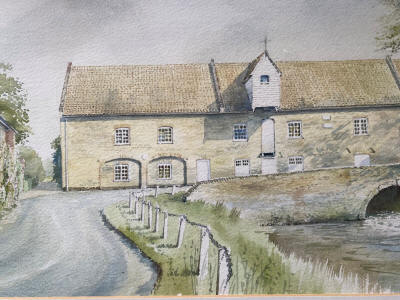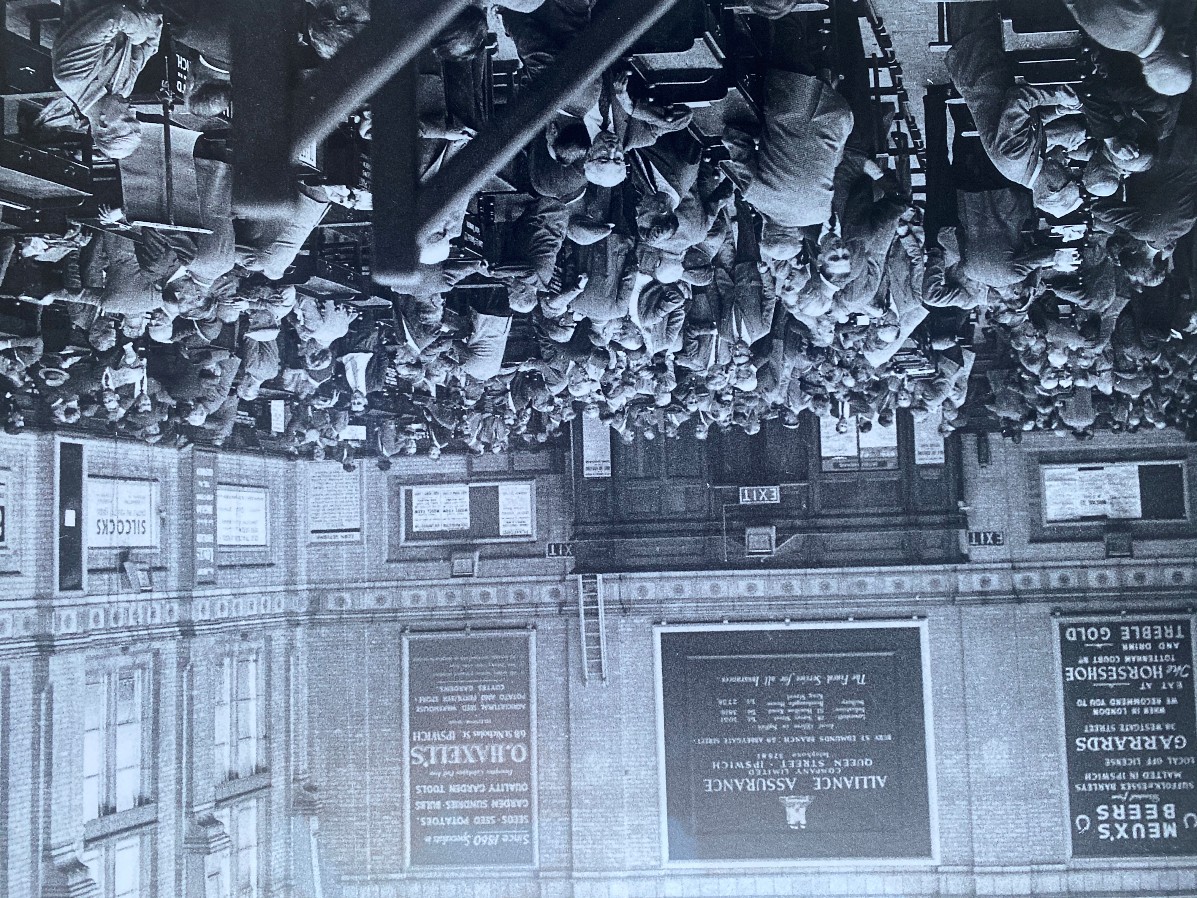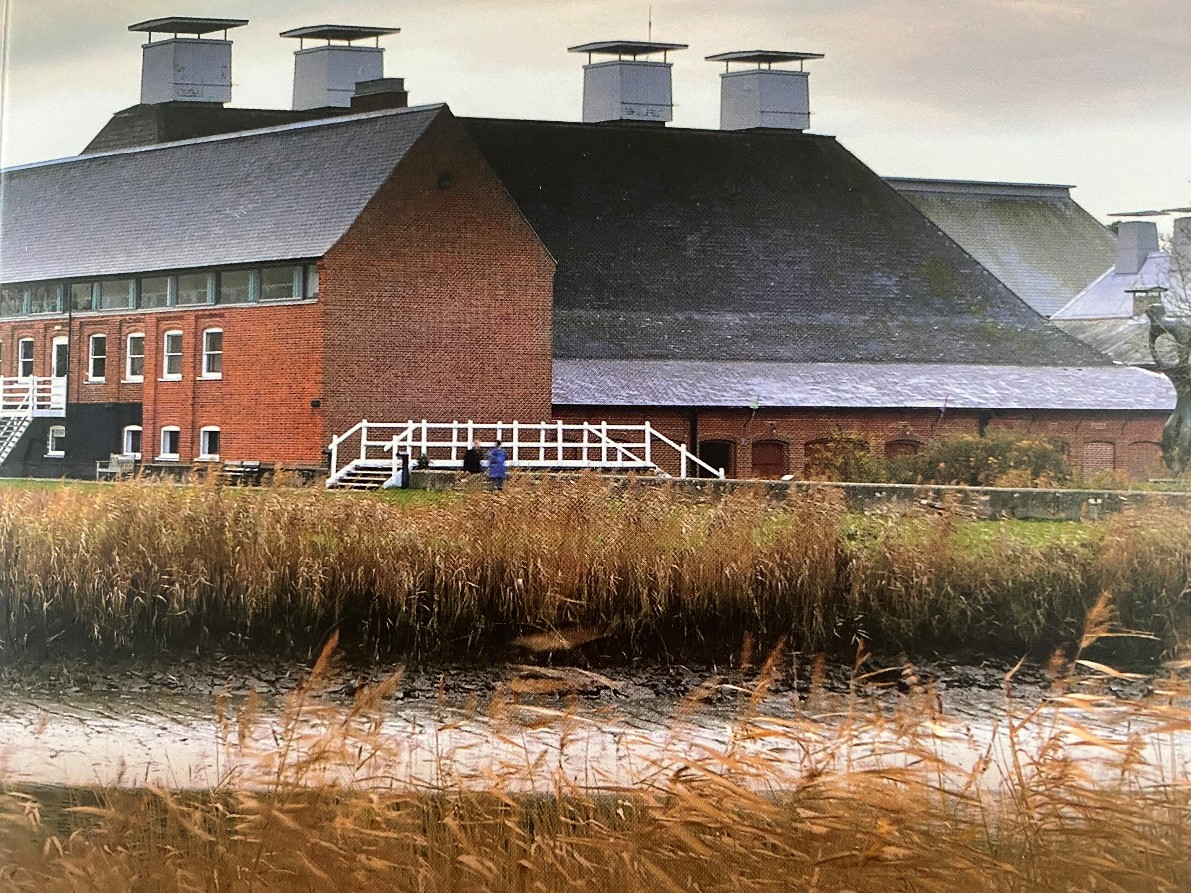|
   |
|
Page 4 |
Newsletter 137 Summer 2022 © Hampshire Mills Group |
|
The Miller, the Maltster, and the Merchant
Robin Appel
|
We write a lot about mills, but rather less about
the millers who operated them. The likes of Joseph
Rank and Joel Spiller became household names, but
for most of the rest, the vital role they played in
the community in their day has long been disregarded
along with too many of their former premises. Yet
they were such an important part of our history, not
only providing one of the vital staples of life, but
also a range of job opportunities, often across a
wider spectrum of rural industry, and occasionally
delivering acts of philanthropy that benefited
everyone.
The thread of this story is that it was not unusual
for the miller to also combine the activity of
maltster, provider of another of life’s staples,
and, sometimes, the activities of both corn and coal
merchant.
Miller/Maltster
Perhaps the most compelling and surviving example of
a miller/maltster (as I revealed 4 years ago in
newsletter 123, Winter 2018) is the one right under
our very noses in Hampshire, sat astride the Eling
Causeway. Here, the mill is described as having two
Poncelet water wheels, each driving a pair of
stones, one pair for grinding wheat into flour, the
other pair, according to the official guide (Eling
Tide Mill, the history of a working mill, Diana
Smith), for crushing ‘barley for malt making’, but,
let us get it the right way round, actually for
crushing malt ready for brewing. The malt came from
what now transpires to be the adjoining malthouse
(previously described as an adjoining grain store)
which now houses the sailing club. The buildings
are described in 1933 as ‘communicating’, so it
would be difficult to believe the two activities of
milling and malting were ever separate businesses.
|
|

The Mill at Burnham Overy, Norfolk,
behind which sits the Malthouse
|
In the centre of Lyme Regis, in Dorset, the Town
Mill sits right next to the maltings, and at Burnham
Overy in Norfolk, the mill sits astride the River
Burn, while the maltings is immediately adjacent on
the eastern bank of the mill race. These two
examples could have each involved a separate
proprietor, but both milling and malting were
prosperous ‘first process’ activities derived
directly from the annual corn harvest. |
|
The combined trades should not surprise us, as when
attending the local corn markets to review the
harvest, as Newson Garrett (1812-1893) of Snape
Maltings, in Suffolk, made a point of doing (Port on
the Alde, Julia Philips), it would be difficult not
to talk to farmers about the yield and quality of
their wheat crop at the same time as inspecting
their barley. Besides, in those days, farmers were
particularly loyal to the miller, maltster, or
merchant they preferred to sell their corn to. It
was certainly not acceptable practice to hawk your
grain samples around different buyers. In fact,
quite the opposite, if you had no buyer lined up,
you presented your grain at the local Corn Exchange,
and had to wait for a buyer to find you! So it was
particularly convenient for farmers if a single
customer for their corn performed a range of
activities which secured them a market for all the
corn they had to sell.
More than Milling and Malting
But that range of activities very easily stretched
beyond just milling and malting. It sometimes
included the role of corn merchant. Back to Eling
Tide Mill, in 1785, the then proprietor, John
Chandler, was described as ‘a prosperous and
enterprising corn merchant’!
If farmers were to continue growing the preferred
varieties of wheat and barley their customers
requested, every so often they needed to purchase
‘new’ seed corn. Back along, this would be derived
from the ‘finest quality’ grain, originally
purchased for processing into flour or malt, but
then put to one side, re-cleaned over a dresser, and
delivered back out to farms for sowing. As recently
as the 1960s this was still a substantial source of
seed sold to farmers under two fanciful headings
‘Field Inspected’ and ‘Field Approved’. From my own
experience ‘Field Inspected’ involved very few steps
beyond the field gate prior to harvest, although
‘Field Approved’ was a bit more thorough, both in
the field and in the seed store.
But selling seeds to farmers was probably not as
profitable as milling or malting. Back in the 19th
century, Edwin Tucker, a farmer in Devon, set
himself up as a seed merchant, but then chose to
expand into malting, eventually operating up to 5
different malthouses. His son, Parnell Tucker, went
on to build one magnificent new maltings, in 1900,
alongside the railway track in Newton Abbott.
(Parnell didn’t stop there: he eventually
graduated to an even more lucrative occupation, as a
brewer, in Exeter.)
|
|
But for millers and maltsters, if trading as a
merchant (of seed corn) was perhaps a means to an
end, it sometimes went even further still. When I
was a boy, brightly liveried lorries plying their
way along the country roads of East Anglia regularly
carried the description ‘Corn, Seed & Coal
Merchant’. There was a historical reason for the
inclusion of coal.
|

Ipswich Corn Exchange crowded with Corn Merchants,
Tuesday, September 3rd, 1963. (Photo purchased from
East Anglian Daily Times)
|
|
We are talking about the days of on-farm rick yards
when the harvest was bundled into sheaves,
originally by hand, then courtesy of the binder.
Come the winter, the stacks of barley and wheat had
to be threshed, normally by a visiting contractor
whose main source of power was a steam powered
traction engine. This operation could stretch over
a week or more and required a lot of coal. The
merchant would traditionally supply the empty sacks
for the grain, and the coal for the steam engine,
all of which was probably deducted from the
remittance for the corn. But, of course, as coal
merchant to the farmers, it was very difficult not
to be coal merchant to the remainder of the local
community. My grandfather’s substantial barley
merchant’s business ended up with 6 full time
employees performing the role of coal merchant,
including 3 delivery drivers with regular rounds
across half a dozen parishes or more.
River or Railway
Where possible, many mills were constructed
straddling a reliable water course, but with the
coming of the railways, maltsters and merchants were
better situated alongside the tracks. Quite apart
from the easier access to coal supplies (maltsters
for their kilns, merchants for the traction
engines), the barley trade itself very quickly
centred around the rail network. By the beginning
of the 20th century, and long before dual
carriageways, the need to deliver vast quantities of
malting barley from East Anglian and Wessex farms to
the huge malthouses of the national brewers in
London, the West Midlands, and the north of England,
struggled with the horse and cart, the canal barge
,or the early motor lorry. . |
|
So farmers needed to deliver their barley to the
nearest railway station for forwarding, either to
their immediate customer, or to the next or final
customer for their grain. As a result, Merchants
sample bags (right) representing individual parcels
of malting barley were printed accordingly, naming
the ‘Station’, that is, the railway station, closest
to the farm where the barley was grown. |
 |
|
The village of Docking in Norfolk had a railway
station, which became a favourite source of malting
barley in ‘The Brewing Capital of the World’,
Burton-on-Trent. As soon as this became wider
knowledge, merchants took advantage. If a
particular sample of malting barley failed to find
favour on Bury St Edmunds’ Corn Exchange on a
Wednesday afternoon, the merchant would take it
home, re-package it in a sample bag naming Docking
as the station, and the parcel would readily sell on
Norwich Corn Exchange the following Saturday
morning! As a result, Docking railway station
became massively oversubscribed with consignments of
malting barley, some finding their way there from as
far afield as the wrong side of the Suffolk border!
A Legacy Worth Protecting
Alas, today there is only a limited trace of our
former malthouses, more often than not just a street
name like Malt Lane, Bishops Waltham. In Dereham,
Norfolk, and Ipswich, Suffolk, two spectacular
blocks of flats are forever former Malthouses,
thanks to the signature architecture of the ‘pyramid
style’ kiln roofs that the developers either chose,
or were compelled, to retain. But there are few
similar examples. Merchants’ former granaries have
long since been swept away.
In glorious contrast, our water mills, sometimes
with adjoining Georgian-fronted houses, punctuating
our smaller rivers, have not only survived in large
numbers, but have evolved into the ‘chocolate box’
image of the perfect pastoral setting. That so many
of them also retain parts, if not all, of their
original infrastructure, is truly remarkable.
Not only that, we have the legacy of John Constable
who chose to illustrate them (Flatford and Parnham
Mills), George Eliot who chose to write a classic
novel around The Mill on the Floss, and
Ronald Binge’s musical composition The Water Mill
which only serves to immortalise the romantic
image of ‘dusty miller’!
Why! oh why! I continually ask myself, was the
maltster, that key provider of the other staple, so
overlooked? Any advance on Warren’s Malthouse in
Thomas Hardy’s Far from the Madding Crowd? |
|
Benjamin Britten chose Snape Maltings because, when
four of its former kilns were gutted, it was
uniquely big enough to convert to a concert hall,
and it was close to Aldeburgh, his home. I do not
believe he had any particular interest in preserving
the image of malting.
As for the merchants, they have almost sunk without
trace beyond - Thomas Hardy again – The Mayor of
Casterbridge whose trading folly has been
re-enacted over and over throughout the last 50
years. No lasting legacy there, only ignominy!
So, I suggest, it is vitally important we retain a
watching brief over our mills, in order to protect
them. We do so need formalised groups who can speak
up for them, and support them. As Clive Aslet wrote
recently in Country Life, of old houses, so too our
mills: “they are a record of our past”! And we
should not rule out that one day, the same concept
could even be re-invented.
|

Musical Malt Kilns |
|
   |
|
|
